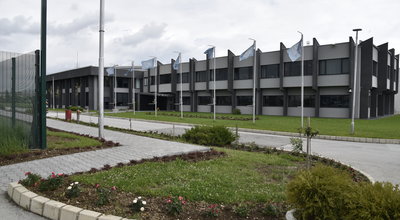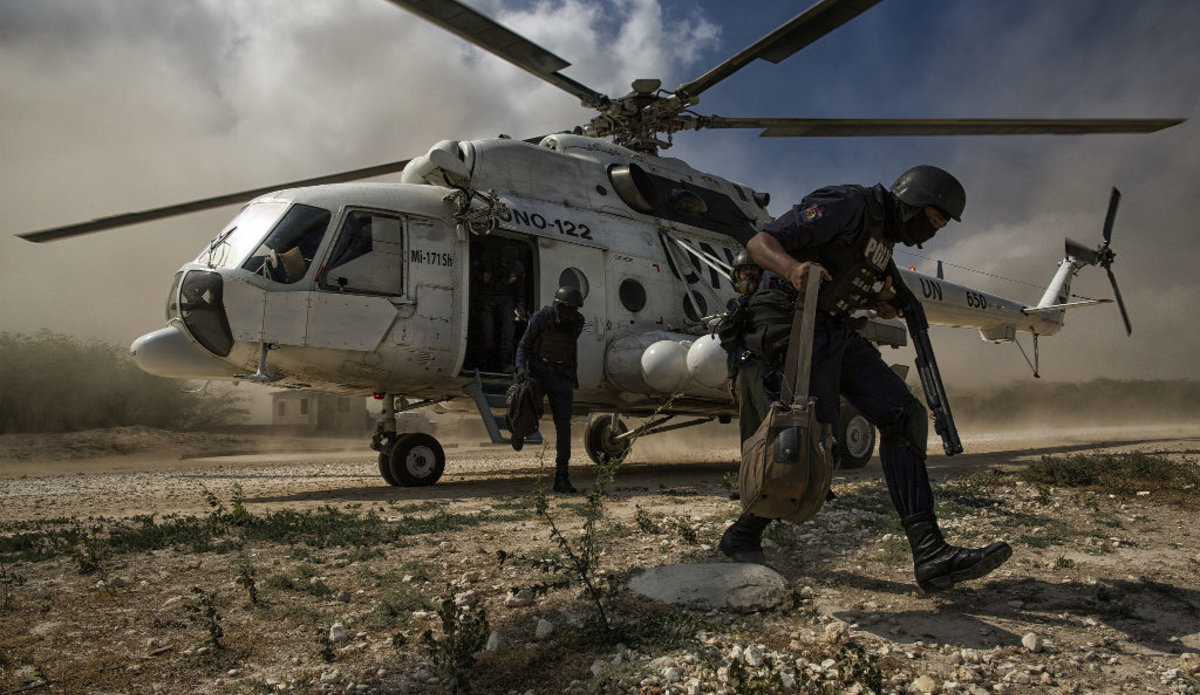Oliver Ivanovic was yesterday handed a new decision on remand in custody for another two months. CI SDP leader, who has been in custody since 27 January, was accused by the Kosovo authorities and EULEX prosecutor of war crimes committed in 1999 and 2000, for which Ivanovic pleaded not guilty.
Former US diplomat Gerard Gallucci, who was the regional head of UNMIK in Mitrovica, said that he, at the time when he was the UN representative in this city, considered Oliver Ivanovic “a person committed to protect the Serbian community in Kosovo – but by political means, not violence”.
Asked to comment to our list indictment against Oliver Ivanovic, Gallucci said that from 2005 to 2008, he has heard various negative stories about ‘radical’ Serbs in the north from the various international representatives; there were stories on crime and various negativities, that he was familiar with that that Ivanovic was “Bridge Keeper” after the NATO bombing. As well that during this period unjustified violence against Albanians occurred who lived north of the Ibar River – but he never heard that anyone claimed that Oliver Ivanovic had any connection with war crimes.
Detailed insight into the indictment against Ivanovic, done in consultation with legal experts in the field of war crimes, shows that the prosecutor did not have convincing evidence to prove that Ivanovic had effective command and control over the unidentified perpetrators of killings, wounding and expulsion of Kosovo Albanians in Mitrovica. Prosecution allegations are confused and imprecise, the indictment is based on the articles from newspapers; they do not specify what these articles are related to and on which evidence are based. There are the impressions of witnesses that Ivanovic was “the leader of a paramilitary group” that “surely” he was informed about something, and due to the circumstances that the defendant was seen near a number of different events, a conclusion was that he was managing these events. EULEX Prosecutor’s indictment included statements of many witnesses who have testified in 1999, 2000, 2013 and 2014, but among them are many of those who for various other reasons may not be valid. For charges relating to the year 1999 the key statements are from protected witnesses from last year!
Legal experts agree that for the phase of a criminal proceeding after the indictment, it is the least strange thesis of the prosecution, that “Ivanovic at the latest by April 1999 was a member of a paramilitary or police unit that operated in Mitrovica with some kind of leadership position with respect to at least one Serbian armed unit”.
They all believe that it was expected of the prosecution to precisely determine which is “at least one unit”, and to say that Ivanovic formally or informally was superior to that unit or group, and also to determine who were the members of the group or at least who were some of the members of the group. (As it is written, it certainly does not indicate a clear effective control over the perpetrators.) “However, the prosecution obviously is trying to be guided by the following logic: Witnesses say they saw Oliver Ivanovic on the site (Muhamet Llapashtica saw Ivanovic as the leader of the paramilitary force, and also Isa Mustafa and Shefki Kosumi) and they draw him as the “leader of some group that kills,” explains interlocutor of Politika, who wished to remain anonymous because the latest report of the European Commission on the progress of Serbia, in the part reference to Kosovo, expressly requires that Serbian officials refrain from commenting “processes that are on-going,” (read: the case of Oliver Ivanovic).
Almost on every page of the indictment, legal experts point out its shortcomings. From the fact that the action of the accused is unclear – whether he ordered or encouraged subordinates to commit a crime, what is the common agreement mentioned, between whom and about what – over the fact that the formulation by which witnesses mark Ivanovic as leader of paramilitary groups is very unclear, because the mere presence of a witness is not evidence of effective control, to the fact that the part of the witnesses statement is not mentioned which should explain why his mere presence is proof that he is the leader (only one says that someone approached him allegedly).
The guilt of Ivanovic is “proved” in the following way: he was allegedly seen in front of the building when Kosovo Albanians were taken out, and some approached him, and the witness concluded that he was giving them orders.
In the explanation of the indictment for war crimes against the civilian population on 14 April 1999, Ivanovic is referred to as “the leader of Serbian paramilitary / police unit, who encouraged a group of subordinates paramilitary / police to commit war crimes,” and on page nine are used the following states “One of paramilitary / police member asked Ivanovic: ‘What do we do, boss,” and he replied: “Apply the rules’ or ‘follow orders’. Shortly after they started with the killing of Albanians. “It remains entirely unclear who is the witness who heard this, because this allegation is floating without footnotes, the names of witnesses and additional explanations.
Lawyer Zdenko Tomanovic (former legal advisor to Slobodan Milosevic in The Hague) considered frivolous that as evidence is used UNMIK internal memorandum dated 4 September 2000, which is based on the testimony of a witness who is also a witness on whose statement the indictment is based. Or information from the “Washington Post” that “NATO officials believed that Ivanovic is one of the people who were responsible for the events of February 3, 2000”.
This attorney finds particularly troubling that the prosecution relies mainly on a kind of internal reports which can be used at the level of intelligence data, but certainly cannot be used as evidence in the proceedings or, if they can, only under certain conditions, such as internal memorandum of UNMIK or biography of Oliver Ivanovic from KFOR.
In a joint indictment with Dragoljub Delibasic, former commander of the Interior Ministry in Mitrovica, Ivanovic has been accused of instigating the commission of the offense of first degree murder on 3 February 2000, as a leader of the Serbian paramilitary group called “Bridge keepers”. Legal experts, with whom Politika consulted, consider that instead of individualization of acts in the indictment is provided a collective description of what this alleged paramilitary groups did, and then it states that Ivanovic as their purported commander is responsible for that.
Tomanovic also finds inconsistency in the prosecution of Kosovo referring to the previous law, but also the future. So in terms of legal qualification, the prosecution declares that Ivanovic in 2000 was responsible for an act which was introduced in 2004 in the Criminal Code of Kosovo, but that apparently in the 2000 was punishable under the law of Assembly of the Autonomous Province of Kosovo and Metohija from the time of Yugoslavia. “First, the offense of aggravated murder of other person for national motives did not exist as a separate offense in any law that was then applicable. Also are incorrect prosecution alleges that this offense was punishable earlier in Kosovo and with the death penalty, because it was abolished by the UNMIK Regulation” reminds Tomanović.
And here’s how an American from UNMIK thinks:
“I guess that Oliver was the target – whatever the truth is about the charges against him – because of two things: to help EULEX to establish balance due to finally taking action against the corrupt and dishonest Kosovo Albanians and because the EU and the US also considered that and the Serbs should be targeted. I guess they felt that targeting Oliver will not cause so much stormy Serbian reactions as targeting some ‘nationalist’ or ‘radical’ leaders in the north,” concluded Gallucci in a statement to Politika.
False witness Halit Barani
In the indictment against Oliver Ivanovic as evidence appears certain statement of Cerkin Ibishi, which he gave to KLA member Halit Berani on March 2, 1999. Berani gave a statemets in the capacity of a witness and in February 2013, when he submitted photographs of the victims and a video.
Berani is known for saying to journalists in Kosovo, on the 17th of March 2004, that the death of three Albanian boys who drowned in the Ibar river was “Serb retaliation for an incident that occurred in Caglavica, where a Serb was injured”, which initiated the March pogrom against Serbs. UNMIK and KFOR in 2004 following the March events arrested and immediately released without explanation Halit Berani, who at the time was president of the Committee for the Protection of Human Rights and Freedoms in Mitrovica. Berani during 2002 was one of the first witnesses in the trial of Slobodan Milosevic at The Hague.
He is seen as compromised witness who claimed that the Yugoslav authorities killed Albanian civilians and thrown their bodies into the Trepca mining basin. “Wall Street Journal” on 31 December 1999, published an article saying that “Berani is former actor with the beard of Karl Marx, who summarizes the Serbian War Crimes by displaying photos of a baby with a crushed skull.” “He spent the war moving from one village to another with his typewriter, inviting reporters of foreign radio stations and diplomats with his daily dose of three minutes with the KLA satellite phone,” said the article.












